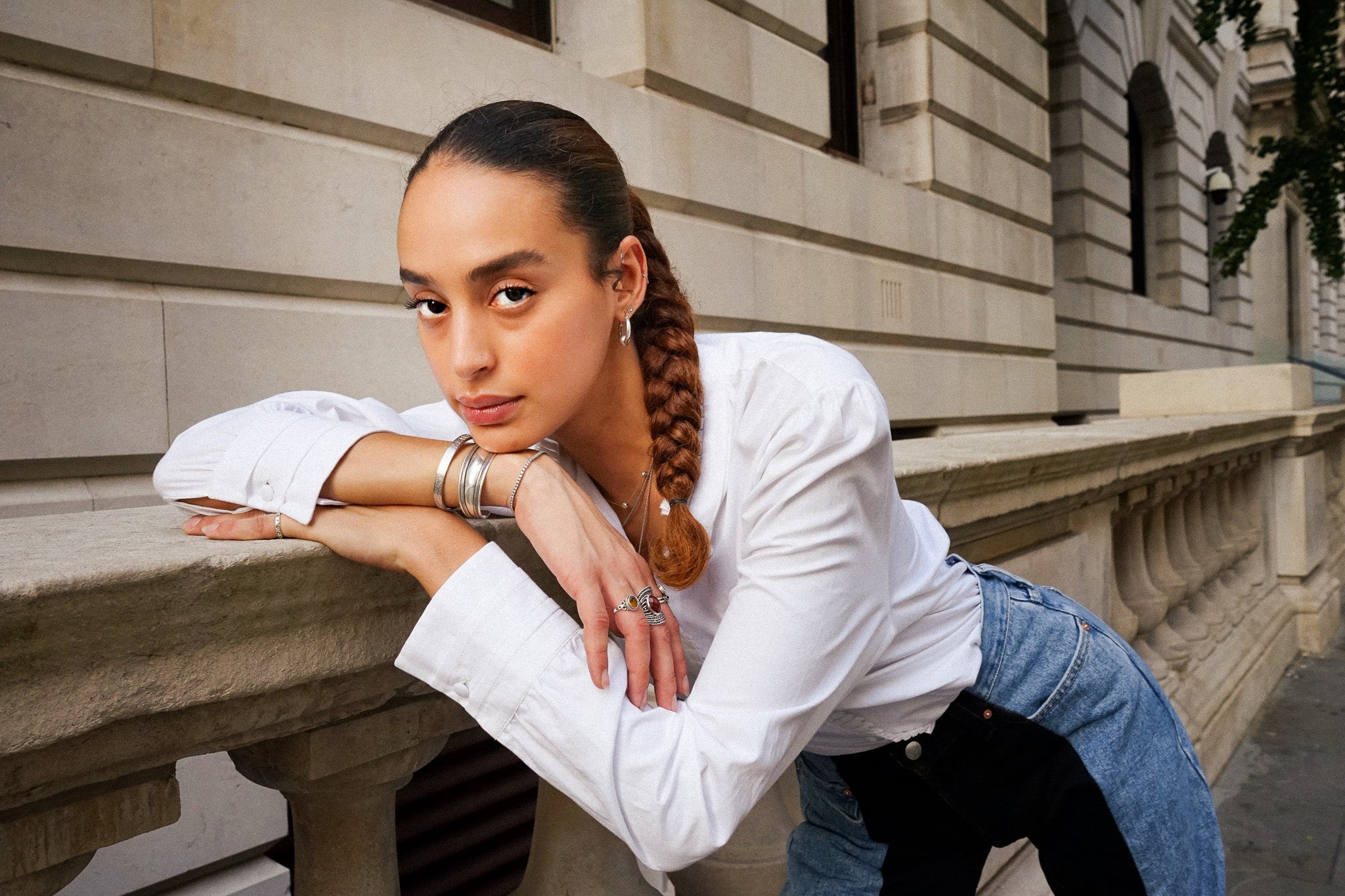The white shirt is arguably the hardest working item in any woman’s wardrobe. It was a signal of peace for Diana Princess of Wales in 1997 when campaigning against mines in Angola with the British Red Cross and HALO Trust. For Julia Roberts’s character in Pretty Woman, her white shirt tied at the waist nodded to insouciance and freedom. Carolyn Bessette Kennedy's Yohji Yamamato wrap around shirt elegantly rejected the formal dress of stuffy black tie dinners and welcomed with it a wave of ease and effortlessness. It oozed sex appeal when worn as a dress by Carrie Bradshaw in Sex And The City whilst Madonna, Patti Smith and Diane Keaton railed against the patriarchy with their collective white-shirt-black-tie combinations, subverting traditional masculine troupes.
The final Queen of France before the French Revolution, Marie Antoinette, weaponised the white shirt in 1783 when posing for her portrait ‘Marie Antoinette In A Chemise Dress’, painted by Madame Vigée-Lebrun, wearing a ruffled white cotton robe, which was deemed highly risqué for it’s revealing nightwear connotations. It is no exaggeration to say that this painting unexpectedly changed the course of history and fashion as we know it, for few had portraits painted of them and so her choice of attire traversed to icon status. Her abstinence from grandeur, embellishments and rich colour marked a pointed refusal to previous royal portraiture that symbolised wealth, power and position. Instead the robe de gaulle welcomed in a humble breath of fresh air, for cotton was cheap and worn by all. Once the initial shock of seeing the Queen in such intimate clothing died down, soon cotton clothing became overwhelmingly popular, weighing heavy demands on the cotton trade and thus the slave trade. As journalist Caroline London reported in The Rack, “Technology and slave labour made it affordable. It was the perfect storm. The affordability increased the desirability, resulting in an even higher demand, which in turn increased the mass production so that the price dropped even further.”
Ironically, the white shirt was previously a symbol of male wealth, for you have to wash white frequently and therefore it isn’t suited to manual labour, hence the term white collar worker for corporate jobs and blue collar for physical. Throughout the 1800s, detachable shirt collars and cuffs became popular for they were far cheaper and easier to maintain than the full white shirt. Regency style icon and socialite, George Beau Brummell made the white shirt his own when he commissioned them to be more structured, transforming the silhouette of tailoring as we know it today.
As the worlds gender and class restrictions eased, so too did the woman’s wardrobe. Coco Chanel frequently looked to mens shirts in her celebrated collections from the 1920’s onwards, championing a more relaxed and easy wearing approach to clothing. Hollywood starlets Grace Kelly, Marlene Dietrich, Katherine and Audrey Hepburn were often pictured in neat white cotton shirts throughout their sparkling careers, consolidating Hollywood’s seal of approval for the staple shirt.

When Vogue celebrated their 100th issue in 1992, Anna Wintour chose Patrick Demarchelier to shoot 10 supermodels wearing identical white jeans and shirts, for “casual sportswear was all the rage.” Linda, Christy, Naomi, Claudia et al, dazzle like angels in their white duos, radiating a fresh and relatable exuberance; marking the fashion industries more democratic evolution. 15 years down the line, still enduring appeal, the white shirt found itself clad again by 10 of ‘The World’s Next Top Models’ featuring Natalia Vodianova, Daria Werbowy and Liya Kebede amongst others for the American May issue shot by Steven Meisel. This time around the look was elevated with jewel coloured sculptural skirts.
It takes approximately 2700 litres of water to make one t-shirt, the white shirts younger sister, providing enough water for one person to drink for 900 days. Add sleeves and suddenly the white shirt feels like a grossly luxurious purchase. Step in E.L.V. DENIM shirts that weigh easier on the conscience. Founder of E.L.V. DENIM Anna Foster, found herself questioning what to do with an old bed sheet which led her to wonder what hotels do with their large scale amassing of bedsheets? Upon learning that hotels shred their old sheets for recycling, which lowers the quality of the material, Foster solved the problem and now upcycles quality bed linen into soft-to-touch classic shirts for E.L.V. DENIM, thereby reducing their carbon footprint and waste dramatically.
Chose from E.L.V. DENIM’s Sydney, Marnie or Alexa styles to transform your wardrobe staple. The Sydney is the answer to the classic shirt but easier to style, with a slight slit on the side for easy wearing and a longer back for versatile styling. Next up the Marnie, a Victorian inspired design complete with pin tucks, handmade pleating and gathering for a more decorative option. Lastly, the Alexa offers a paired down style, a simplification of the Marnie for a more minimalist feel.
Wear yours nonchalantly tucked into a trouser, peeping out of a jumper, anchoring underneath a dress or slipping out a skirt. The white shirt will carry you through your school uniform, first job and beyond.
@charlienewman1995
SHOP OUR WHITE SHIRTS











